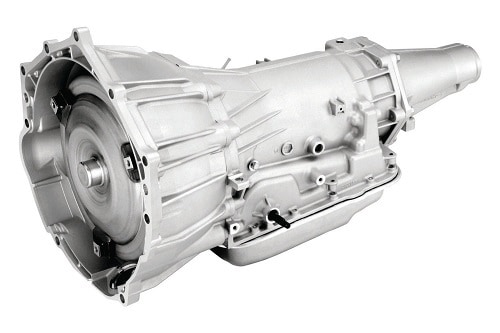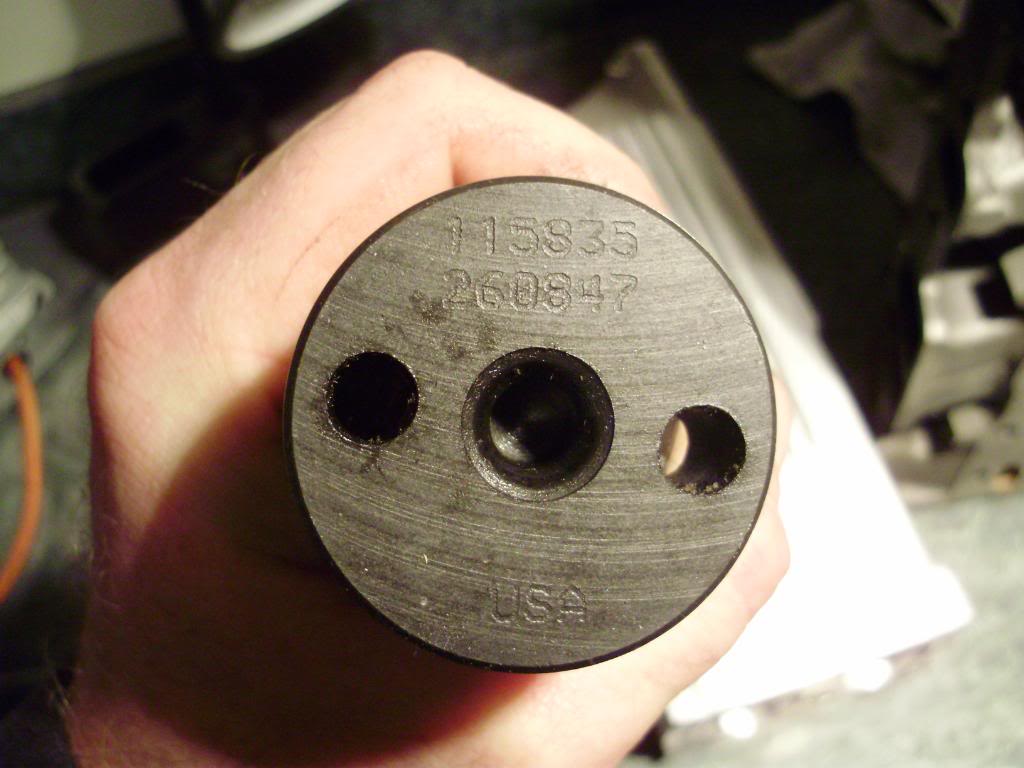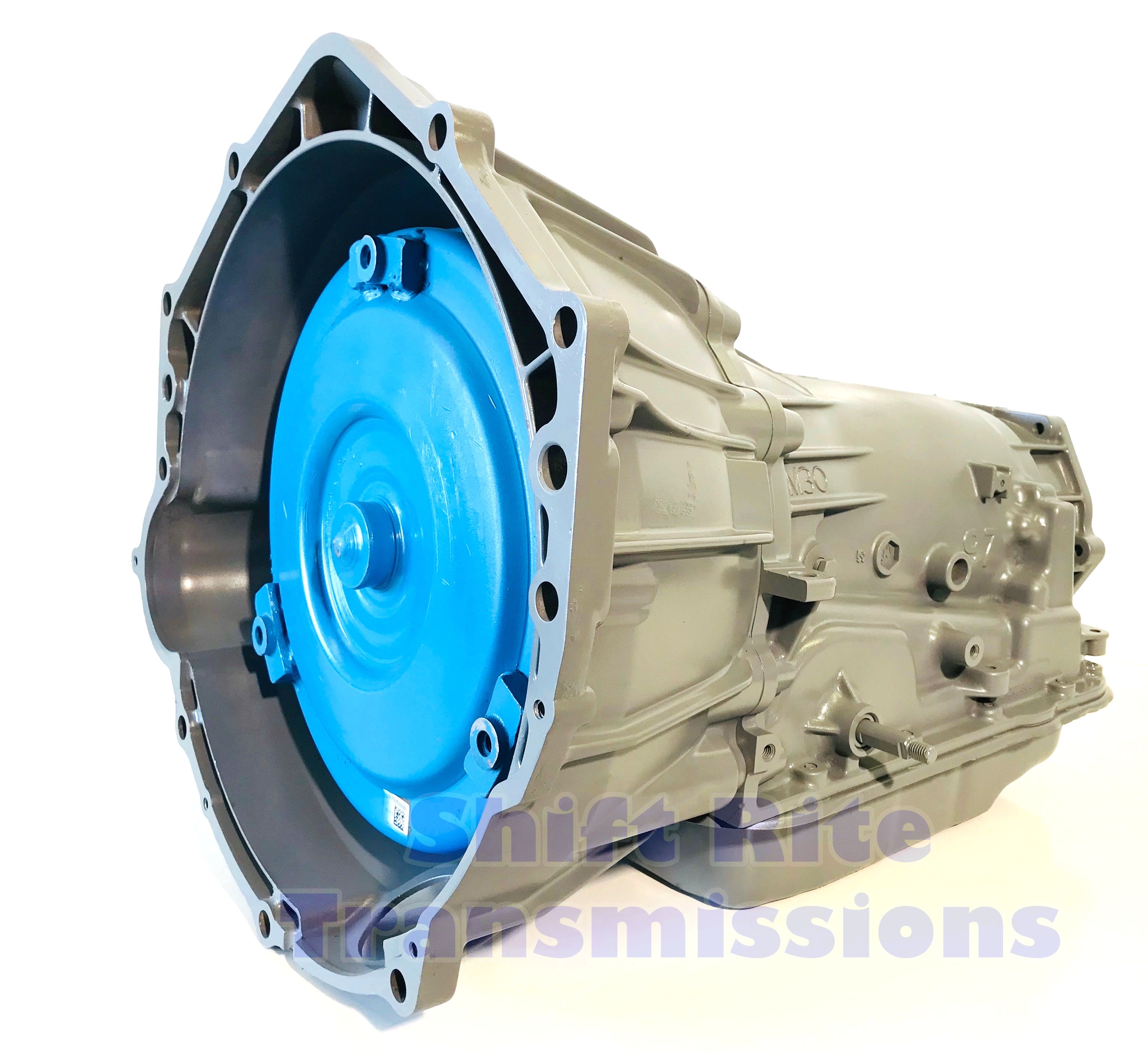The 4L60 was manufactured by General Motor's Corporation and was available from 1990 to 1992. The 4L60 was the first automatic overdrive transmission specifically designed for rear-wheel high performance applications. Available for just three years, the 4L60 transmission. 4L60E 1995 4X4 TRANSMISSION 5.7L 5.0L 4.3L. $1099 Product Details. 4L60E 1995 Corvette TRANSMISSION 5.7L. $1299.99 Product Details. 4L60E 1996 Corvette TRANSMISSION 5.7L. $1299.99 Product Details. 4L60E 1996-1997 2WD TRANSMISSION 5.7L 5.0L 4.3L. Certified Transmission offers the following resource for those interested in knowing vehicle applications for the remanufactured 4L60E transmission. To view applications begin by selecting the vehicle manufacturer listed below. This remanufactured 4L60E Hard Hat Transmission comes with a matching torque converter, ready to install! 3yr Warranty Fast & Easy Core Return Our 4L60E is rated for engines producing up to 275hp/250tq The Hard Hat 4L60E retains its factory shift pattern and is a great option for stock vehicles that still want a stronger, longer lasting transmission than a regular OEM replacement.
The 4L60E transmission has been in production for over twenty years, even longer if you consider the fact that it came from the 4L60 (700R4). the “E” at the end of 4L60 indicates that it is electronically controlled. 4L60E Identification can be quite the chore since the transmission has been in production for so long.
It is told exactly when to shift by the computer and it allows for more accurate conditions based shifting. It also allowed for more than one set of shift points to be programmed into the transmission, which allowed for tow haul mode in the trucks and high performance modes for muscle cars.
The 4L60E was utilized in cars and light duty trucks. The 4L80E was used for heavier duty trucks. When it was introduced, the original small-block Chevy engine was still in production, and it was retained for the LS Gen III line of engines. The 4L60E bellhousing can bolt to either engine, although you may need an adapter to get a Gen III transmission to bolt to Gens I and II and vice versa.

4l60 Transmission Fluid Capacity

For the purposes of easy identification, we have broken the 4L60E into 4 distinct eras. These eras are easy to identify from the outside of the transmission. Really it’s 3 eras, with the fourth making sure that you aren’t getting a 700R4/4L60 by mistake.
Here are a few characteristics that all years share.

- ALL 4L60E transmission have a 12 pin connector from the harness. They can be purple or green depending on the year
- They all are shifted by the vehicles ECM
- They all have aluminum cases
- No changes in gearing
4l60 Transmissions
4L60E One Piece Case Identification: 93-97
The one-piece case 4L60E was produced from 1993 through 1997. This is the easiest way to identify it. The 4L60 is the latter model 700R4 transmission, only the name changed, if you think you may have a 700R4 look here to identify it. GM changed its naming nomenclature into a universal standard across all of its product line. The 4 stands for 4 speed, L is for Longitudinal (for a rear wheel drive vehicle), and 60 is the torque capacity. 60 is supposed to be for 600 pound feet of torque that this transmission can handle. Although, everyone would agree that the transmission got better as time went on.
If the transmission that you are looking at has a one-piece case, you’ll want to make sure that you don’t have a 700R4/4L60. In order to verify that you aren’t looking at a 700r4 you’ll need to verify that the transmission has a harness connection, and not a TV Cable. At that point you can be certain that you have identified a 4L60E.
If you have a one-piece case transmission and you’d like to confirm that It is a 4L60E you’ll need to look at the code on the transmission. The year code starts over every decade, but it’s not an issue because they have a two-piece case in the 2000’s. You can now jump down to the year identification guide. The 4L60E uses a dust cover similar to that used on the TH350 or TH400 transmissions.
- Four bolts connect the tail shaft (or transfer case) to the transmission.
- The vehicle speed sensor changed locations during the production run. From 1993 to 1995 (Corvette till 96’) it was on the driver’s side of the tail shaft. From 1996 and up it moved to the passenger side.
- There is an information sticker on top of the bell housing at the very top of the transmission. It is impossible to read with the transmission in the car. It is very easy to read. But, if you are looking at a transmission in the car, or if the sticker has been removed, you’ll find that it has also been machined into the passenger side of the transmission at the rear corner above the pan.
- These have the classic 6 bolt bellhousing like the other classic transmissions that came before it.
- This version, as well as the 96-99 4L60E use a 298mm input shaft/torque converter.
4L60E Two-Piece Case Identification: 1996-1999
The major difference between the two-piece case 4L60E versions, is that the bellhousing bolts have slightly different patterns. This case is made to bolt up to the older legacy engine bolt patterns, such as the small-block Chevy. 9 bolts connect the transmission to the engine, which is three more than the 93-97 version.

- Six bolts are now used to connect the tail shaft.
- They only have three different types of bell-housings in North America. The most common of these is the 90 degree V6 and V8 Bellhousing. There’s also a 60 degree V6 bellhousing as well. The last bellhousing type is the special Corvette adapter.
- This version, as well as the 93-97 4L60E use a 298mm input shaft/torque converter.
- The vehicle speed sensor is still on the passenger side of the tail-shaft.
2 Piece Case Identification: 2000 and Newer

The 2000 and newer model looks virtually identical to its 96-99 predecessor, but there were many improvements made to strengthen the transmission. The major physical change is to the transmission bellhousing, this was in order to allow it to bolt to the newer LS series of engines.
- Still maintains the six bolt pattern at the tail shaft.
- The entire length of the transmission is ¾” longer.
- The ECM connector is green from 2000-2005, and purple from 2006 and up. The 2006 and up have a black input shaft speed sensor.
- While still compatible with the 1955 and up bolt pattern, the new LS series engines added a bolt hole at the very top, which is reflected on this bellhousing
- The input shaft and torque converter are now 300mm, which means that they are no longer compatible with each other.
The 4L60E transmission is both the physical and spiritual successor to theTH700R4. It was the workhorse of the GM automatic transmissions at the turn of the century. It began replacing the 700R4 (which was then known as the 4L60) in 1997. They were both longitudinal transmissions with four forward gears and a reverse gear. The major difference between the two is the way the shifts are handled. The 4L60E uses computer control to shift. That is what the “E” stands for. Instead of just knowing the throttle position to guess engine load, the ECM uses the sensors in the engine to know exactly what kind of load it is under. This allows for optimal shifts under all conditions, which improved fuel economy and engine life.
Resources:
- Here is a great video on Youtube from a guy who really knows his stuff.
- Here is a link to a forum on LS1tech.com. It has all of the codes on it.
- This is the most commonly used transmission for an LS swap, due to it’s relative affordability and availability.
4L60E Specs
| Manufacturer: General Motors |
| Production: 1992- Present Day |
| Type: 4 Speed Longitudinal Automatic |
Gear Ratios:
|
| Input Shaft: 298 mm |
| Torque Converter Lock: Yes |
| Overdrive: Yes |
| RPO Code: M30 |
| Outer Case Material: Aluminum, with a 2 removable bellhousing |
| Controlled by Computer: Yes: Controlled by the engines ECU |
| Weight: Roughly 133 pounds dry |
The gearing was a direct carry over from its predecessor. The 60 in its name refers to the fact that it was designed to handle 6000 pounds of gross vehicle weight. Although the acronym never changed, the 4L60E received continuous improvements throughout its existence. The later ones are certainly stronger.
You May Also be Interested In:
GM changed the name of the 700R4 in the middle of its production cycle. The new name was 4L60. After a few years the 700R4/4L60 became the 4L60E around 1992. This is cost a total of confusion with people looking to buy the right transmission. Now in the aftermarket world, the 700R4 is almost always called the 700R4. No confusion. But, if you are going to pick up a “4L60” on Craigslist, just know that it’s an entirely different transmission than the 4L60E.
- 4L60/700R4- Same transmission.
- 4L60E- Fundamentally different.
4L60E vs 4L60: Biggest Differences
4l60 Transmission Controller
4L60 and 4L60E similarity
These transmissions looked almost exactly alike on the outside when the 4L60E was introduced. You could always tell them apart by the giant harness plug that went above the transmission pan. There are quite a few things that these transmissions share in common.
- They have the same bellhousing bolt pattern. (Later 4L60E’s lose a bolt at the 12 o’clock position)
- They use the same transmission pan and bolt pattern.
- They are the same exact length.
- The 4L60E and 4L60 both have the same number of gears and gear ratios.
When discussing the earliest 4l60E transmissions, they really did look and act exactly like the 700R4 did. It wasn’t until later that the 4L60E began to evolve. If you would like to read more about the evolution of the 4L60E over the years, check this article out: Are all 4L60E transmissions the same?
Conclusion: 4L60 vs. 4L60E
4l60 Transmission Identification
It is really important to understand that these transmissions sound almost identical. The difference is in the way that their shifts are controlled. They represent GM‘s move from mechanical control to a more sophisticated computer vehicle management. They are not easily compatible with each other, so make sure you get the one that you need.
